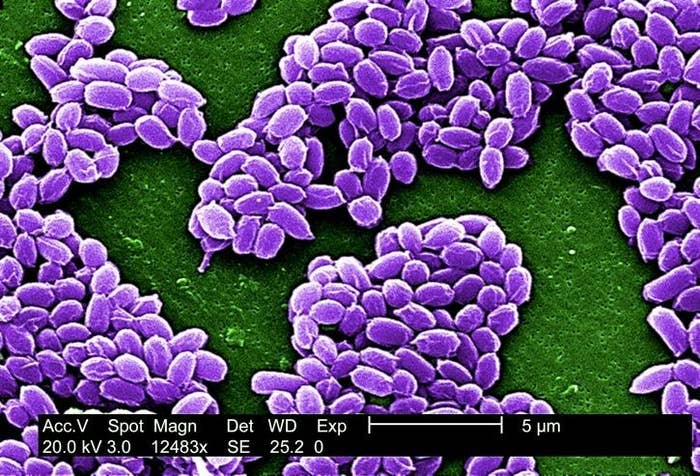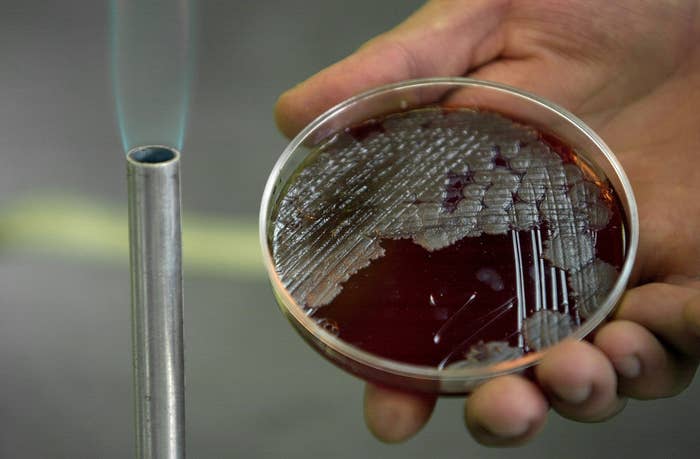
WASHINGTON D.C. — Congressional overseers of federal labs that handle dangerous disease germs voiced anger and disbelief at a Tuesday hearing on Capitol Hill over the latest biodefense lab leaks of anthrax.
Late on Monday, federal investigators added 106 labs to the 86 already known to have received still-living spores of anthrax in tainted shipments from a U.S. Army lab over the last decade.
"It's deja vu all over again," said Representative Tim Murphy of Pennsylvania, chair of the investigation subcommittee hearing of the House Energy and Commerce Committee. "What we have here is a pattern of recurring issues, of complacency, and a lax culture of safety."
Investigation panel representatives voiced frustration with the late addition of the labs from CDC investigators, the revelation of no central policy for reporting lab accidents, and a series of incidents that included the discovery of smallpox vials at the National Institute of Health last year.
"There's almost a contempt for Congressional oversight," said representative Larry Buschon of Indiana, a physician, citing past promises of reforms of the federal "select agents" program that regulates shipments of dangerous pathogens.
"This is anthrax. We should have had policies for decades," Buschon told Defense Department and CDC representatives testifying before the panel.
On its anthrax laboratory review website, the Defense Department's investigation now includes labs in all 50 states, the District of Columbia, Guam, Puerto Rico, the U.S. Virgin Islands, and seven other countries. They all received live samples of the deadly bacteria, initially marked as dead (or "inactivated") when sent from the U.S. Army's Dugway Proving Ground in Utah.
Federal investigators reported last week that inadequate radiation doses and poor spore testing at Dugway were likely responsible for the tainted shipments. Rep. Murphy voiced surprise that the investigation showed that all four Defense Department labs — not just Dugway — relied on too little radiation in their individual inactivation procedures for anthrax, a point acknowledged at the hearing by D. Christian Hassell, the Defense Department's deputy assistant secretary of defense for chemical and biological defense.
These mistakes were only revealed in May when a Maryland lab sent anthrax spores without an inactivation label as a test, checked to see if the bacteria were still alive, and alerted CDC officials that they were. Otherwise, the shipments might have continued.
The newly added 106 labs were secondary recipients of the spores, passed along to to them from the 86 biodefense labs that had received supposedly dead spores since 2003.
That count doesn't include shipments subsequently sent from nine overseas labs — some of them owned by foreign governments — that received Dugway shipments, said CDC Medical Director and Chief Medical Officer Daniel Sosin, who received much of the panel's ire at the hearing.
Hassell told the panel these labs belonged to "close allies," ones that likely had their own stocks of living anthrax regardless. But he could not assure them that those foreign-owned labs had not made subsequent shipments of the live anthrax samples they'd received from Dugway.
Murphy and other members of the panel voiced support for a central federal agency to regulate not only shipments, but procedures for laboratory handling of dangerous bugs across the entire government in the wake of the anthrax shipments, and past leaks.

In 2001, anthrax killed five people in bioterror mailings traced to a different U.S. Army biodefense lab.
The large number of labs sent anthrax samples of supposedly dead spores are part of an effort to test and build rapid anthrax detection capabilities nationwide in case of a future bioterror attack.
But critics of this build-up say the anthrax leaks expose foolhardy empire-building by biodefense officials, who shipped dangerous bugs worldwide with inadequate oversight.
"It seems clear that, to build a constituency for its useless anthrax program, DoD has shoveled business, and spores, to contractors and subcontractors in all 50 states, the District of Columbia, and 3 territories," biologist Richard Ebright of Rutgers University told BuzzFeed News by email.
In the investigation reported last week, lab visits revealed that the Defense Department lacked a proven, standard procedure for killing anthrax sent to labs to test detection methods. Dugway officials also underestimated how often spores survived inactivation, believing it was about 2% to 3% of the time, the investigation showed, rather than the 21% of the time indicated by lab records.
Academic researchers were sharply critical of the Defense Department's lack of standard, verified protocols for killing anthrax revealed by the mis-shipments.
"This concept is not complicated and it is applied every day across the world in the commercial preservation of food and pharmaceuticals," biologist John Battista of Louisiana State University and A&M College told BuzzFeed News by email. "To not implement these protocols suggests ignorance, arrogance, or sloth — perhaps some combination of the three."
No one appears to have been infected by the shipments, which were sent to labs in liquid form, rather than as a dry, inhalable powder.
However, it is now clear that subsequent uncontrolled shipments were sent from the affected labs to other non-defense ones, leading to fears of living anthrax stocks of the strain used in the 2001 terror attacks growing in labs unknown.
Investigators for the CDC, which oversees the select agents program, are now tracing these leaks to such labs, which include the 106 secondary ones reported on Monday evening.
This post has been updated with statements from lawmakers at Tuesday's hearing.
